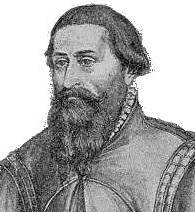Veit Stoss | |
|---|---|
 | |
| Born | Before 1450 |
| Died | 20 September 1533 (aged 83 or older) Nuremberg, Free Imperial City of Nuremberg, Holy Roman Empire |
| Resting place | St. Johannis Cemetery, Nuremberg |
| Known for | Sculpture |
| Movement | Late Gothic, Northern Renaissance |


Veit Stoss (German: [faɪt ˈʃtoːs], also spelled Stoß and Stuoss; Polish: Wit Stwosz; Latin: Vitus Stoss; before 1450 – about 20 September 1533) was a leading German sculptor, mostly working with wood, whose career covered the transition between the late Gothic and the Northern Renaissance. His style emphasized pathos and emotion, helped by his virtuoso carving of billowing drapery; it has been called "late Gothic Baroque".[1] He had a large workshop, and in addition to his own works there are a number by pupils. He is best known for the altarpiece in St. Mary's Basilica in Kraków, Poland.
- ^ Snyder 1985, p. 309